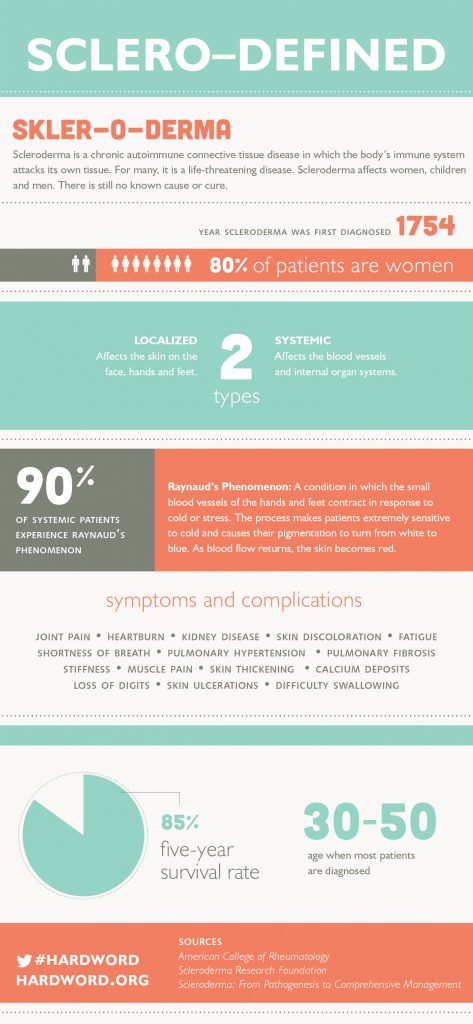“This post was sponsored by Scleroderma as part of an Influencer Activation for Influence Central.”
TIME TO HELP!
When my son, Ben, was born, he was in the hospital for months at a time. When we brought him home, he was in a tented crib and we had to remove all carpets and anything that might trigger the autoimmune disorder that he seemed to be born with. The doctors though it was M.S.; then they didn’t know. We could not allow anyone in the house or to touch him. And then he would be hospitalized again. When they did a spinal tap, three hospital aides had to hold me down as my baby screamed in agony.
Ben has scleroderma, and it is confusing and ugly. He is in pain daily and works full time to support his family while suffering from this disease. Although this disease affects mostly women who are from 30 to 50, it also affects men.

The NIH website describes scleroderma as:
“Derived from the Greek words “sklerosis,” meaning hardness, and “derma,” meaning skin, scleroderma literally means “hard skin.” Although it is often referred to as if it were a single disease, scleroderma is really a symptom of a group of diseases that involve the abnormal growth of connective tissue, which supports the skin and internal organs. It is sometimes used, therefore, as an umbrella term for these disorders. In some forms of scleroderma, hard, tight skin is the extent of this abnormal process. In other forms, however, the problem goes much deeper, affecting blood vessels and internal organs, such as the heart, lungs, and kidneys.
Scleroderma is called both a rheumatic (roo-MA-tik) disease and a connective tissue disease. The term rheumatic disease refers to a group of conditions characterized by inflammation or pain in the muscles, joints, or fibrous tissue. A connective tissue disease is one that affects tissues such as skin, tendons, and cartilage”.
How does this disease affect people?
Autoimmune disorders are chronic and difficult because people think that you are making up things. With scleroderma, appearance is often a critical concern, as well as the extreme fatigue that occurs also. Friends and family think you are lazy, but that is not the case. Thick and hardened skin can affect even the face. Plastic surgery is sometimes needed. When the hands are affected, simple tasks are impossible to do. You cannot brush your hair or your teeth, it is hard to use your fingers and hands for everyday simple things like holding a cup of tea or coffee. Systemic scleroderma affects the face and the mouth. It affects everything in your life, including for men, a hard time getting an erection due to the disease and its effect on blood vessels and for women, a vaginal dryness that makes intercourse impossible.
In June, the Scleroderma Foundation and the Scleroderma Research Foundation and the Scleroderma Foundation of Canada are all tuning in to assisting people become more aware of the disease of Scleroderma and to inform people how to help. There is no cure for Scleroderma and since many people are not aware of the disease unless it affects someone in their family, research is not getting the help and resources to scientifically combat this disorder. Like other rare disorders, Scleroderma only affects one person in every 906 and most patients are female and many have not been diagnosed. Please help my son and everyone else with this baffling and scary disorder and take a pledge like I did to tell AT LEAST ONE PERSON – just ONE PERSON – about this Scleroderma that has no cure and is not caused genetically. We need help to inform people about a disease that often goes silent and causes great suffering in people who have the disease.
TAKE THE PLEDGE
- Please sign on to take the pledge to inform someone about this disease at the Scleroderma Aware Website
- So join us in the Thunderclap Promotion on June 29, 2016 to help raise awareness of this sometimes crippling and baffling disease!
- June 29 is World Scleroderma Day.
Leave a Reply